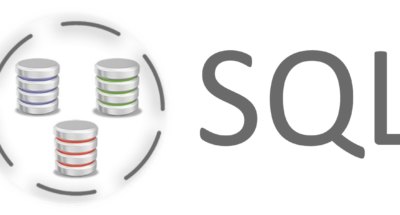REQUEST COMPLIMENTARY SQLS*PLUS LICENCE
SQL tutorial

SQL – in simple words, it is a programming language for structured queries (Structured Query Language), which is used as an effective way to save data, find its parts, update, extract from the database and delete.
Types of SQL queries
SELECT – Extract records from the table
SELECT LIMIT – Extract records from the table and limit the results.
SELECT TOP – Extract records from a table and limit the results.
INSERT – Insert records into a table
UPDATE – Update table entries
DELETE – Delete entries from the table.
TRUNCATE TABLE – Delete all records from the table (without rollback).
UNION – Combines 2 sets of results (removes duplicates)
UNION ALL – Combines 2 sets of results (includes duplicates)
INTERSECT – Crossing 2 sets of results
MINUS – Resulting set of one minus resultant set of another
EXCEPT – set of results one minus set of results another
JOIN – Connection of tables
DISTINCT – Get unique records
FROM – Table list and JOIN information
WHERE – Results Filter
ORDER BY – Sort request results
GROUP BY – Group one or more columns
HAVING – Restrict groups of returned rows
SQL tables and views
CREATE TABLE – Create a table
CREATE TABLE AS – Create a table from the definition and data of another table
ALTER TABLE – Add, modify or delete columns in the table; rename the table
DROP TABLE – Delete table
GLOBAL TEMP – Tables tables that are different within an SQL session
LOCAL TEMP – Tables Tables that differ in modules and SQL built-in program
SQL VIEW – Virtual tables (views of other tables)
SQL keys, indexes
Primary Keys – Create or delete primary keys.
Indexes – Creating and deleting indexes (performance tuning)
SQL Comparison Operators
Comparison operators – Comparison operators such as =, !=, <>, >, >=, <, <= etc.
SQL conditions
AND – 2 or more conditions to be met
OR – Any of the conditions are fulfilled
AND and OR – Combination of conditions AND and OR
LIKE – Use wildcards in the WHERE sentence.
IN – Matching the expression to the list of values
NOT – Denial
IS NULL – Check value to NULL
IS NOT NULL – Check value for NOT NULL
BETWEEN – Selection within range (inclusive)
EXISTS – The condition is fulfilled if the subquery returns at least one line
SQL programming
Comments – How to create comments in your SQL code
SQL data types
Data Types – Data types in SQL
SQL Aliases
ALIASES – Create a temporary name for a column or table
SQL Functions
COUNT – Returns the number of expressions
SUM – Returns the amount of the expression
MIN – Returns minimum expression
MAX – Returns maximum expression
AVG – Returns the average value of the expression
SQL literalsLITERALS – Literals such as string, integer, decimal and datetime. |
SQL Tutorial – Full Database Course for Beginners
MORE NEWS
PreambleNoSql is not a replacement for SQL databases but is a valid alternative for many situations where standard SQL is not the best approach for...
PreambleMongoDB Conditional operators specify a condition to which the value of the document field shall correspond.Comparison Query Operators $eq...
5 Database management trends impacting database administrationIn the realm of database management systems, moreover half (52%) of your competitors feel...
The data type is defined as the type of data that any column or variable can store in MS SQL Server. What is the data type? When you create any table or...
PreambleMS SQL Server is a client-server architecture. MS SQL Server process starts with the client application sending a query.SQL Server accepts,...
First the basics: what is the master/slave?One database server (“master”) responds and can do anything. A lot of other database servers store copies of all...
PreambleAtom Hopper (based on Apache Abdera) for those who may not know is an open-source project sponsored by Rackspace. Today we will figure out how to...
PreambleMongoDB recently introduced its new aggregation structure. This structure provides a simpler solution for calculating aggregated values rather...
FlexibilityOne of the most advertised features of MongoDB is its flexibility. Flexibility, however, is a double-edged sword. More flexibility means more...
PreambleSQLShell is a cross-platform command-line tool for SQL, similar to psql for PostgreSQL or MySQL command-line tool for MySQL.Why use it?If you...
PreambleWriting an application on top of the framework on top of the driver on top of the database is a bit like a game on the phone: you say “insert...
PreambleOracle Coherence is a distributed cache that is functionally comparable with Memcached. In addition to the basic function of the API cache, it...
PreambleIBM pureXML, a proprietary XML database built on a relational mechanism (designed for puns) that offers both relational ( SQL / XML ) and...
What is PostgreSQL array? In PostgreSQL we can define a column as an array of valid data types. The data type can be built-in, custom or enumerated....
PreambleIf you are a Linux sysadmin or developer, there comes a time when you need to manage an Oracle database that can work in your environment.In this...
PreambleStarting with Microsoft SQL Server 2008, by default, the group of local administrators is no longer added to SQL Server administrators during the...















